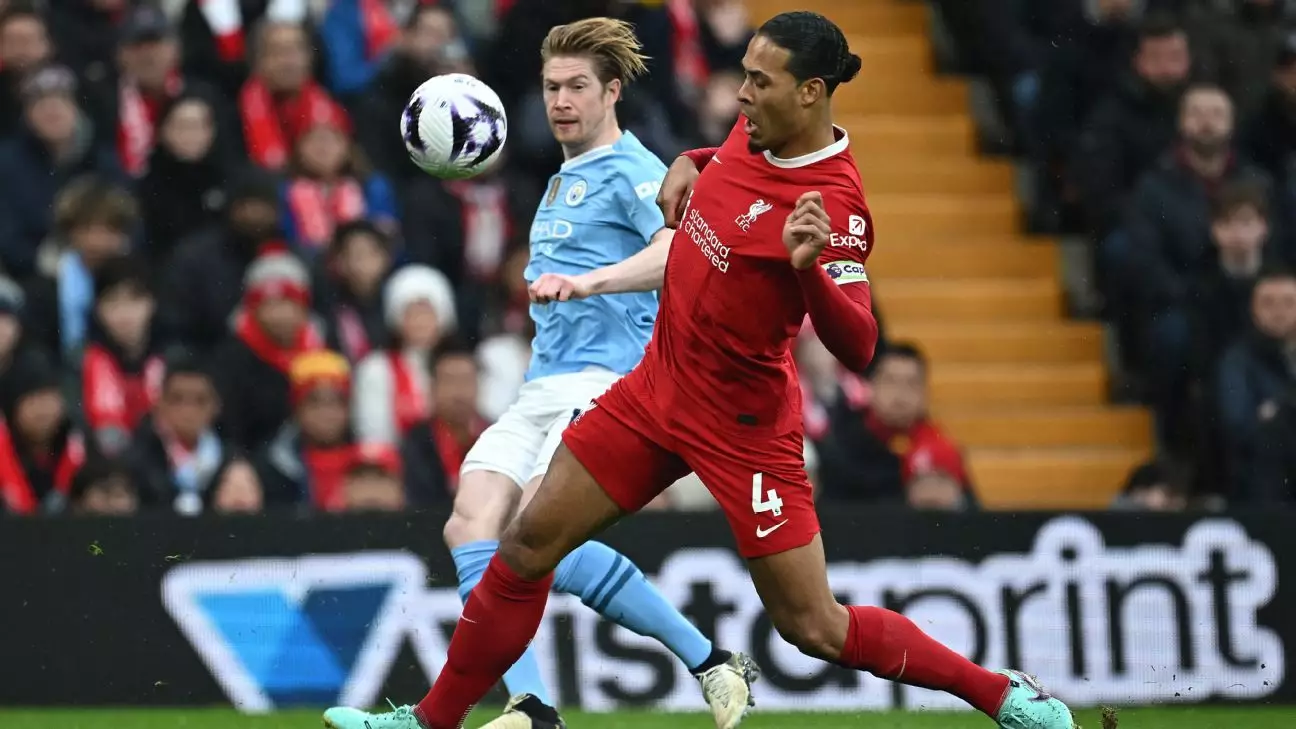The world of football is a continuously evolving landscape, marked by talent, performance, and the relentless march of time. Among the most significant challenges facing elite clubs in the Premier League today is the management of aging stars whose incredible contributions have become part of their teams’ success stories. Specifically, players like Mohamed Salah, Virgil van Dijk, and Kevin De Bruyne find themselves at a crossroads, staring down the final months of their contracts while their careers approach the twilight years. As clubs assess the value of these celebrated athletes, baffling considerations persist regarding their futures.
As soon as contracts near their conclusion, uncertainty brews not only among fans but also within clubs themselves. Salah, the prolific forward, is at 32, while defenders van Dijk and De Bruyne are hitting the age of 33. Together, they represent a significant portion of their respective teams’ successes. However, the clock is ticking. Questions arise: Should Liverpool secure new deals for these iconic figures, or is it wiser to explore fresh talent that could offer long-term value?
The situation is complicated further by the fact that both clubs find themselves in a highly competitive landscape. Emerging talents abound, and investments in younger players could potentially yield better dividends in the years to come. Yet, Salah, van Dijk, and De Bruyne have not only displayed their undeniable talent but also borne the weight of high expectations from fans and clubs. Their abilities, honed over years of top-level competition, pose a dilemma for club management: how to weigh the promise of younger players against the consistent delivery of these seasoned professionals.
Performance metrics are deeply ingrained in football analysis; they shape recruitment strategies and contract negotiations. For instance, Salah has left an indelible mark with his current form, leading the Premier League’s scoring charts with 13 goals. Yet, recurring injury challenges cast a shadow on his otherwise stellar record. Similarly, van Dijk’s fitness history raises eyebrows even as he remains a pillar of Liverpool’s defense. De Bruyne’s struggles with a string of injuries have made his future at Manchester City a question mark.
The challenge arises from evaluating not just the present but what players will contribute in the coming seasons. Clubs often wrestle with the trace of age versus performance, running the risk of being stuck with players who, due to injuries or diminishing skills, may become expensive liabilities in the coming years. Keeping a close eye on fitness and data analytics plays a vital role in this evaluation process. Clubs must accurately predict an athlete’s trajectory, assessing whether a star can sustain high performance or if it’s time to transition to a younger recruitment phase.
Lessons from History: Learning When to Let Go
Past experiences can serve as valuable lessons when making these decisions. High-profile player releases have often prompted debates among fans and analysts alike. Manchester United parted ways with Raphaël Varane largely due to injuries that hindered his time on the field, only for that caution to be reaffirmed as he has struggled with injuries at his new club. Conversely, Manchester City previously let go of Ilkay Gündogan following a glittering season, only to see him underperform upon his return a year later.
There are, however, notable exceptions to the decline narrative, as evidenced by players like Cristiano Ronaldo and Lionel Messi, who have managed to defy age-related stereotypes. Their continued success illustrates that not every player entering their 30s will experience decline. However, clubs often face temptations to cling to these elite players, holding on until it becomes untenable.
Finding Balance: Pragmatism Over Emotion
Ultimately, any negotiations surrounding aging stars should balance pragmatism and sentiment. Clubs need to acknowledge that while players might bring invaluable experience and leadership, they must also consider the economic implications of high salaries that could hinder future recruitment strategies. The football market is teeming with opportunities, yet players find a saturated market when seeking refuge from Premier League wages; lucrative offers are now increasingly found in places like Saudi Arabia, limiting the terms clubs can provide.
The key to navigating these complexities lies in communication and compromise. Elite players may consider accepting lower wages or shorter-term contracts to maintain their lifestyle while allowing clubs the flexibility to manage budgets without the risk of being encumbered by overpaid, underperforming talent.
Ensuring that aging stars receive the attention they deserve while planning for the future remains a delicate act. Clubs must decide whether they will trust their veterans to deliver consistent performances or whether the time has come to usher in new talents capable of sustaining long-term success. As the clock ticks down on contracts, the coming months will prove critical in shaping the futures of Premier League’s household names.

